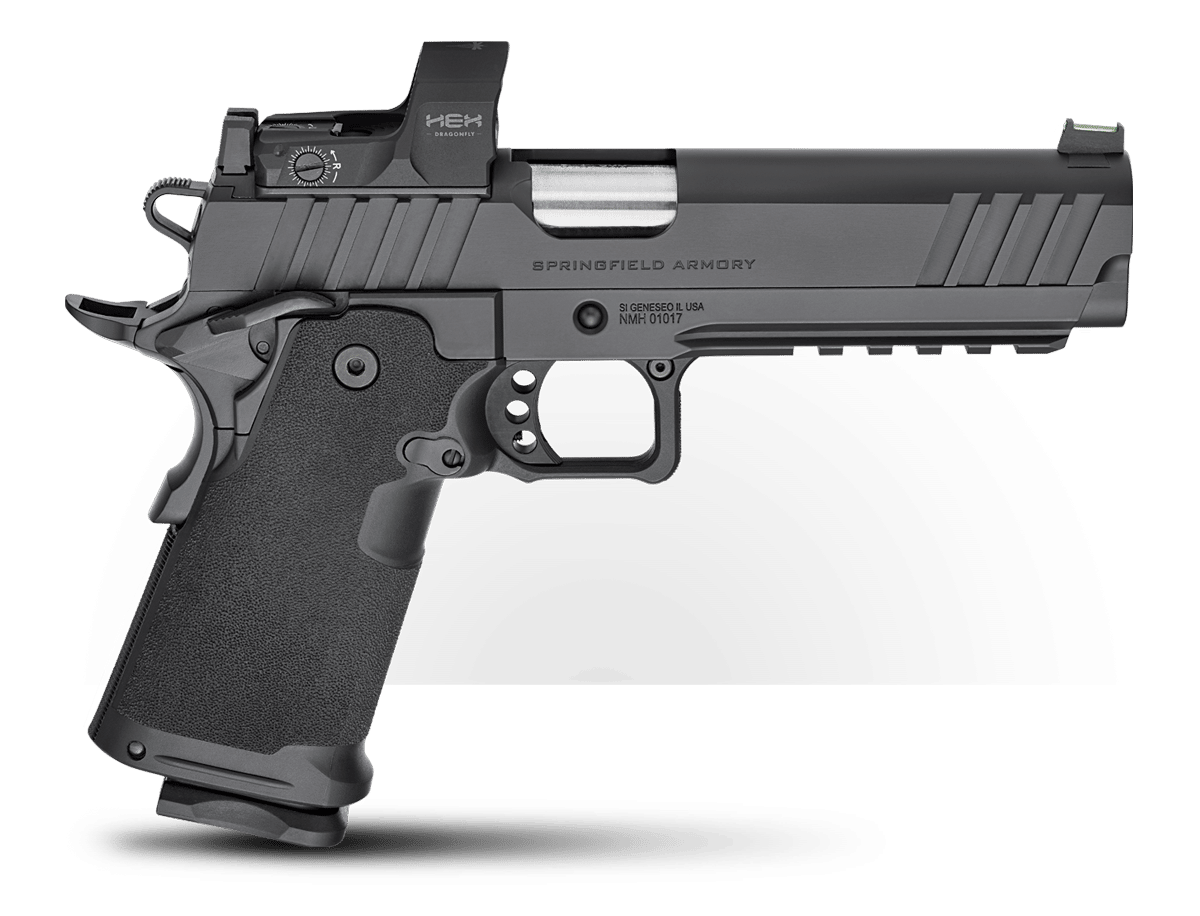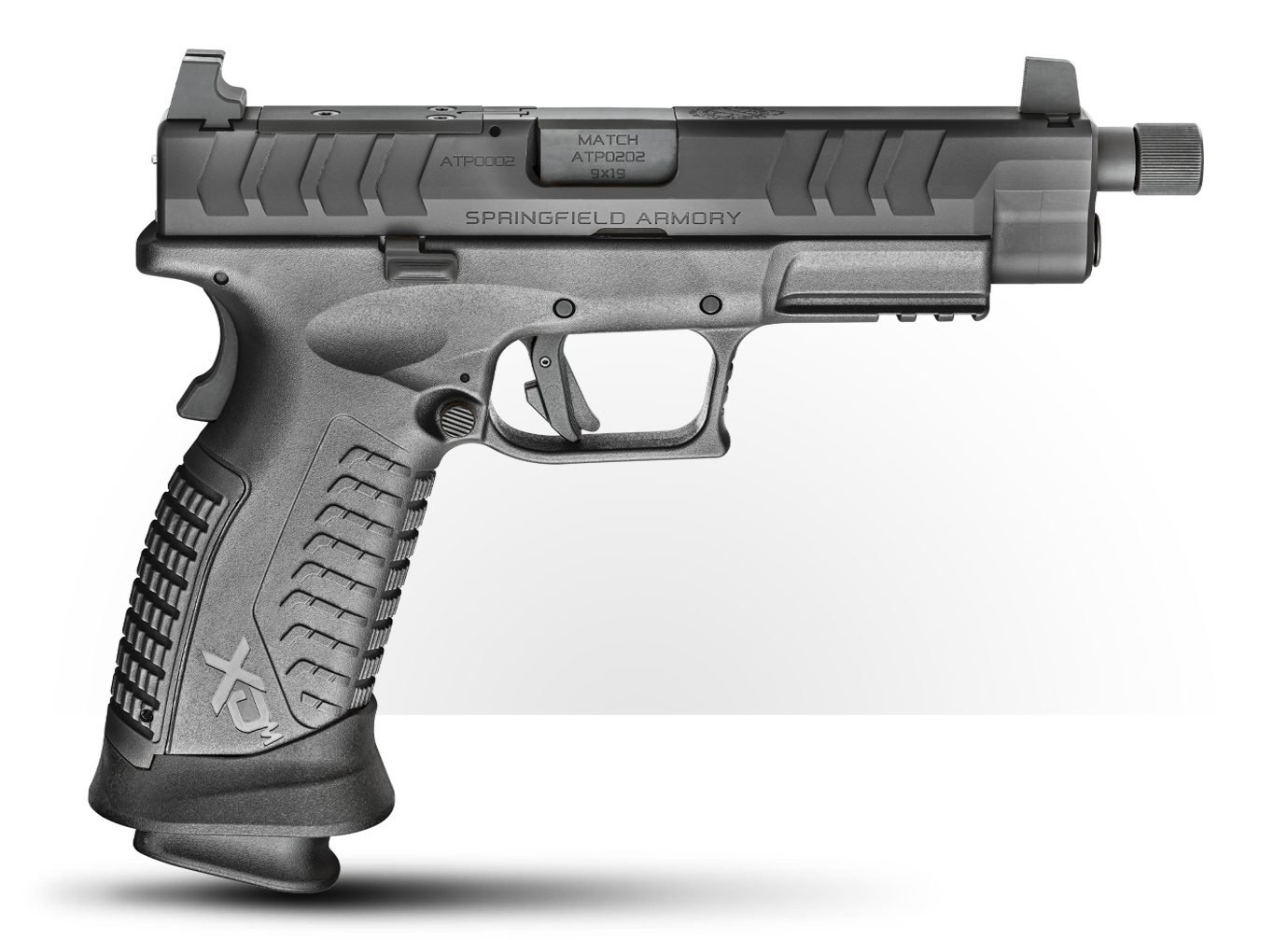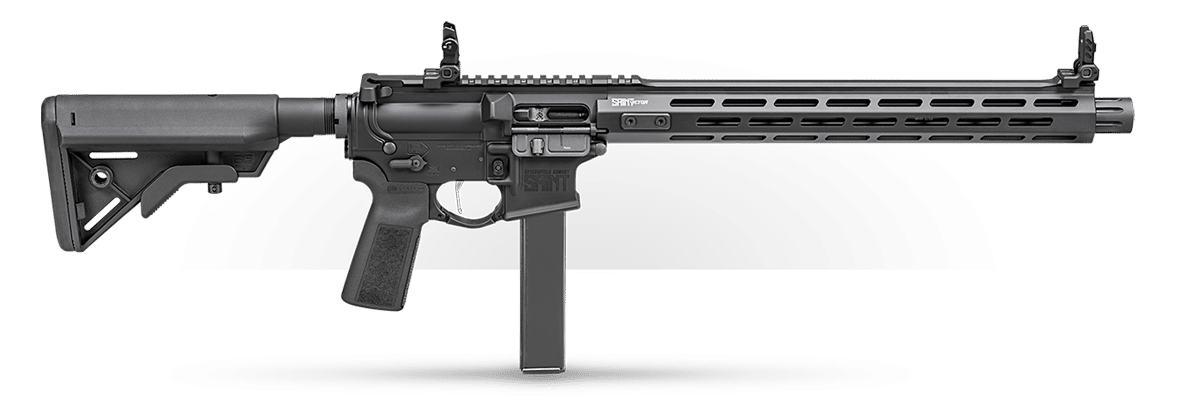Since its inception, the modern bullet has come a long way in its evolutionary path. The very word “bullet” stems from the French “boulle / boullet,” meaning small ball, which is exactly what was fired from the very earliest smooth bore firearms.
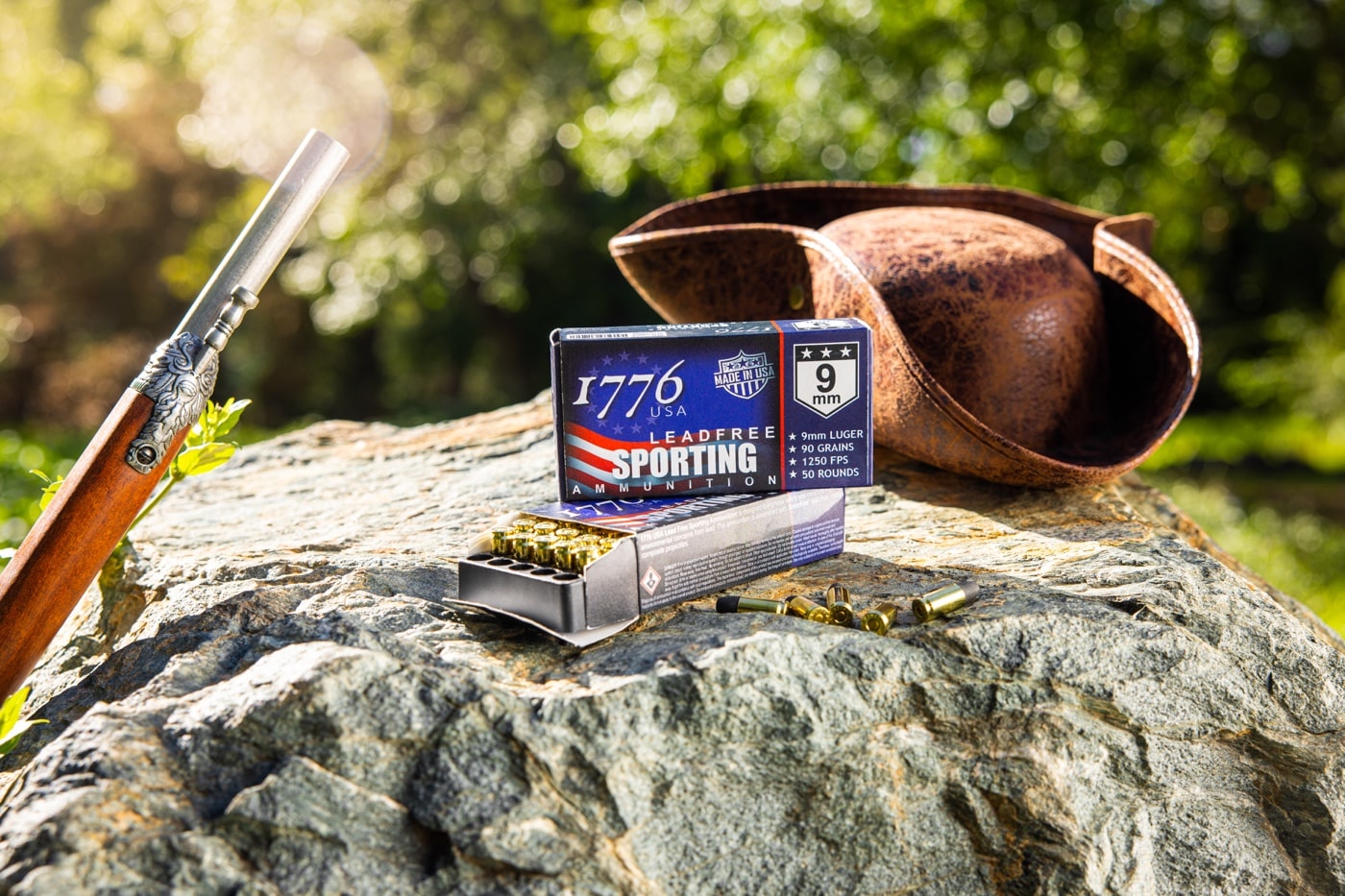
As time progressed along the path of innovation and refinement, these projectiles advanced into cylindrical, pointed designs that allowed for greater accuracy, particularly when fired from rifled barrels.
Across all calibers, ammunition designs have improved in numerous ways over the last century, with some being built for defensive capability and maximum stopping power against threats, and of course those that were designed for greater accuracy over increased distances.
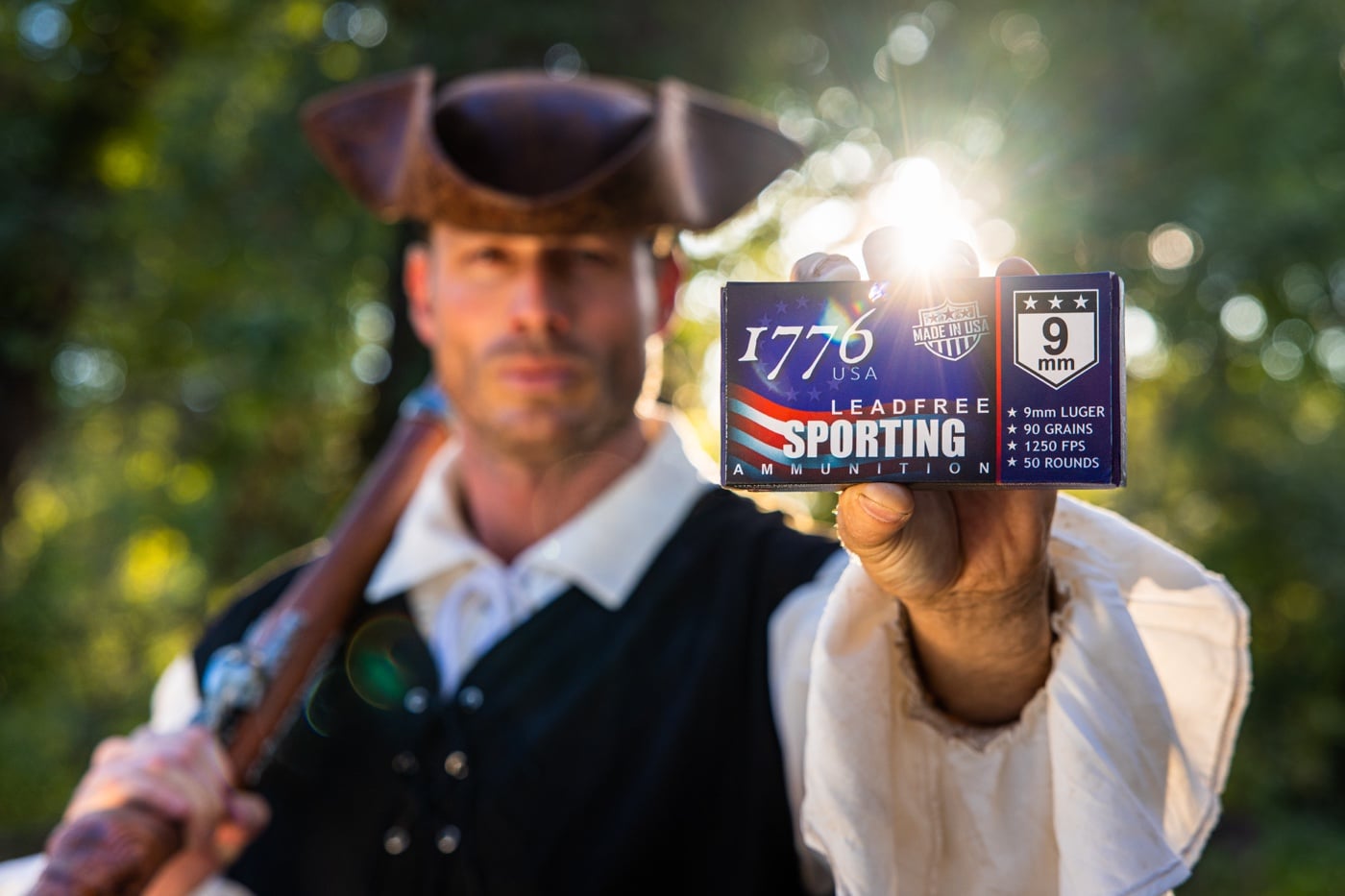
When it comes to sporting ammunition for training and practice purposes, however, the leaps and bounds in design and composition have not necessarily exhibited the wide array of innovation and significant changes that precision and defensive ammunitions have.
Building Blocks
Most modern “range ammunition”, or practice ammo, for the last many decades have fallen under the category of basic FMJ, or full metal jacket rounds, which consist of a copper- or steel alloy-coated bullet. Some people refer to these rounds as “ball ammunition,” a reference to its typically rounded tip and perhaps a harkening to its original namesake.
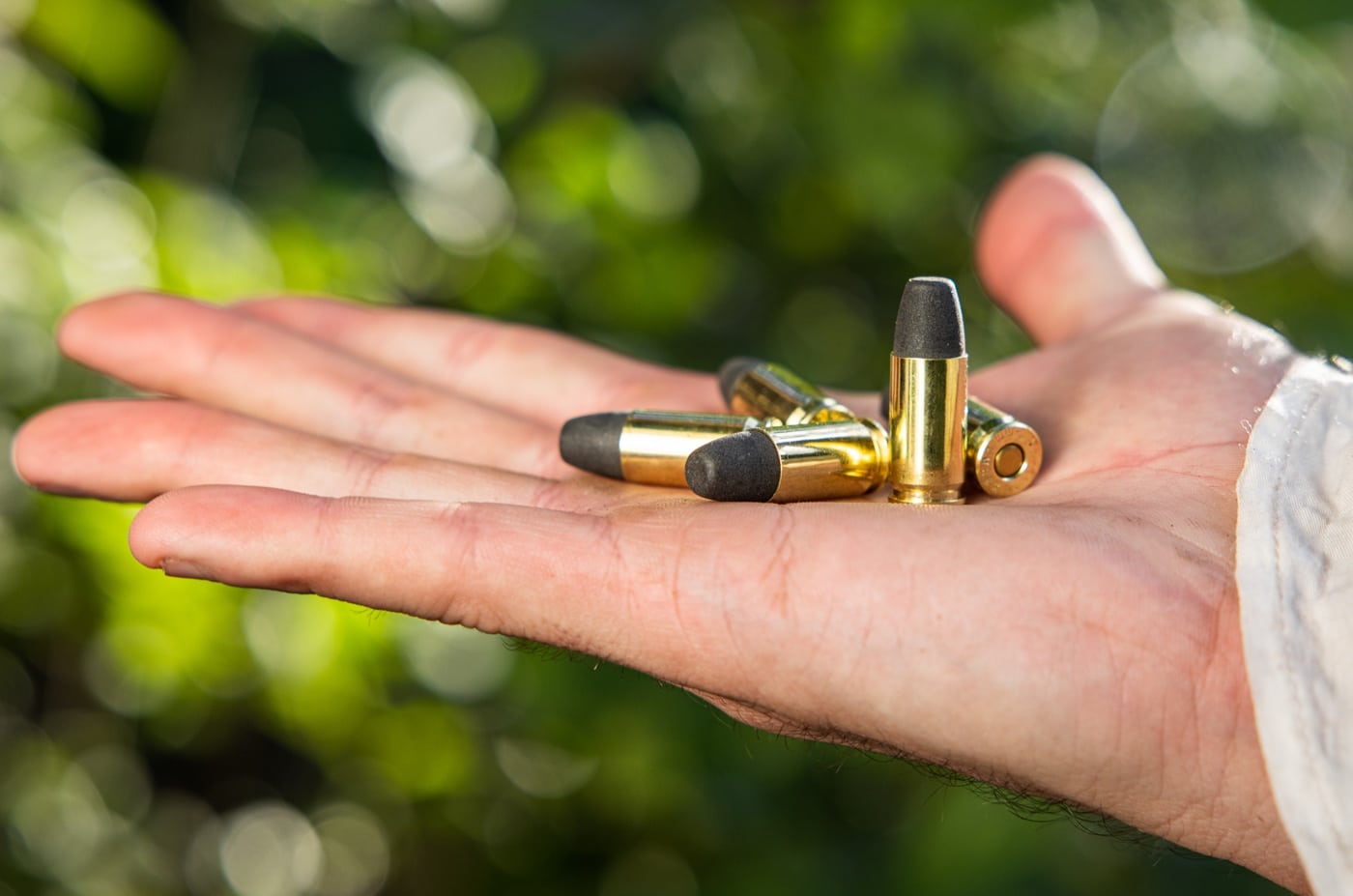
The benefit of the coating is that it helps reduce the amount of lead residue left within the bore after the round is discharged, and these types of rounds are typically intended for use at the range for practice and training. They are significantly more affordable and are not designed for optimal efficacy in self-defense scenarios. They also still introduce lead into the environment upon impact.
Although lead is understood to be toxic, these rounds have not changed much in composition over the years, although a few brands of “green” or lead-free environmentally friendly ammunition have come to market featuring projectiles that use lead-free alloys or synthetic material to craft the bullet.
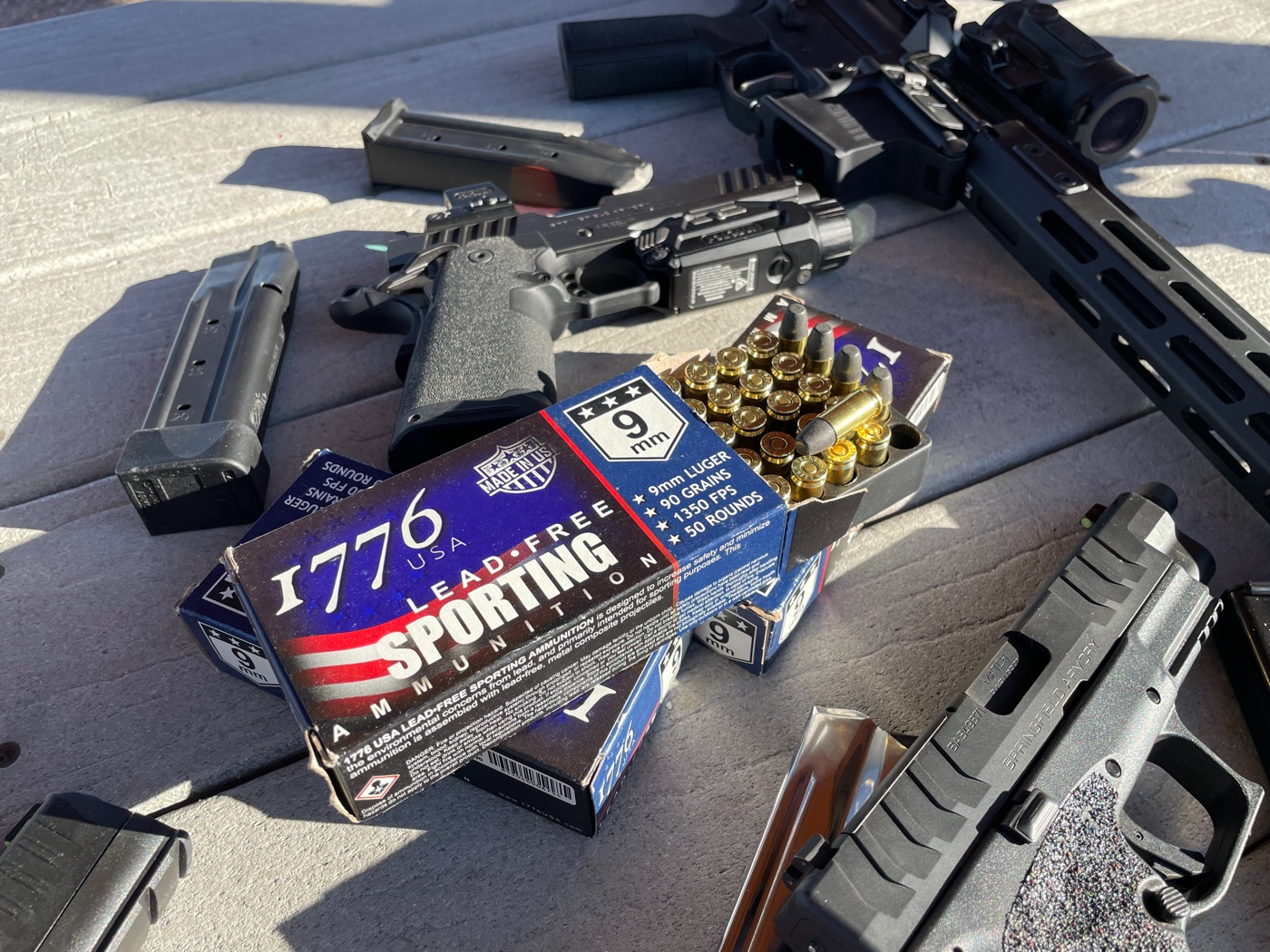
While they have many advantages, these lead-free rounds are still much less common than basic lead “ball” ammo. Why is that? All that to say, we haven’t shaken the lead out, so to speak. Why might that be the case, I wondered?
So, I asked around. Cost, concern regarding quality versus familiar ball ammo, and availability were amongst the top reasons that friends, avid sporting and recreational shooters, LEO, and military buddies cited for not having made the switch to “green ammo” themselves on a consistent basis.
I had also heard some murmurings about the perception of downsides regarding lead-free ammunition, most of it being casual hearsay at the range regarding these types of rounds, cycling and feeding issues that people had heard about, and the mixed results that were being reported from friends and users regarding reliability and overall satisfaction. Nothing concrete though.
All things considered, I realized I had personally never actually fired any lead-free ammunition during my own training. So, being the kind of guy that needs to see and experience things for myself, I hit the store and did some digging into what was the latest and seemingly most innovative lead-free ammo available today. That’s when I discovered 1776 USA.
Hands-On
1776 USA Lead-Free Sporting Ammunition is a new ammunition to market that offers a low-cost, lead-free solution that may just be as revolutionary as its own namesake. This American-based company proudly presents itself as a leading manufacturer of components and ammunition, manufactured right here in the USA, producing their innovative lead-free projectile and their own brass.
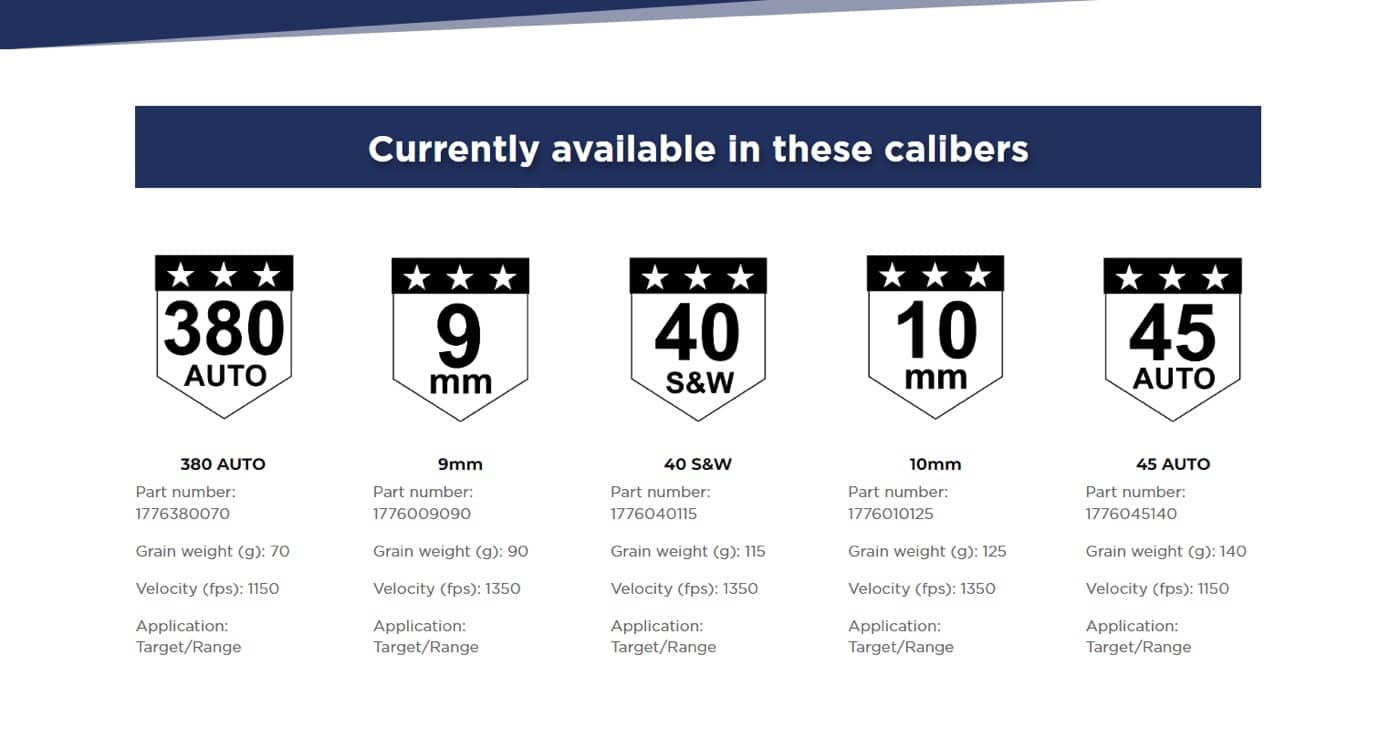
The all-black, unique-looking, newly patent-pending projectile is a lead-free composite material that is wrapped in a nylon jacket. Besides looking cool, it’s designed to increase cartridge efficiency by incurring less blow-by, barrel wear and fouling. All that to boot, the MSRP on the ammo was comparable (less expensive actually) to my regular flavor of ball ammo at the local sportsman’s store.
So, I picked up a few hundred rounds of the 1776 USA 9mm and took it to the range to put it to the test. Needless to say, I was impressed with the results and experience during what ended up being a few back-to-back training sessions while cycling the ammo through a series of my favorite Springfield Armory firearms including the Hellcat Pro, XD-M Elite, DS Prodigy, and 9mm SAINT Victor Carbine.
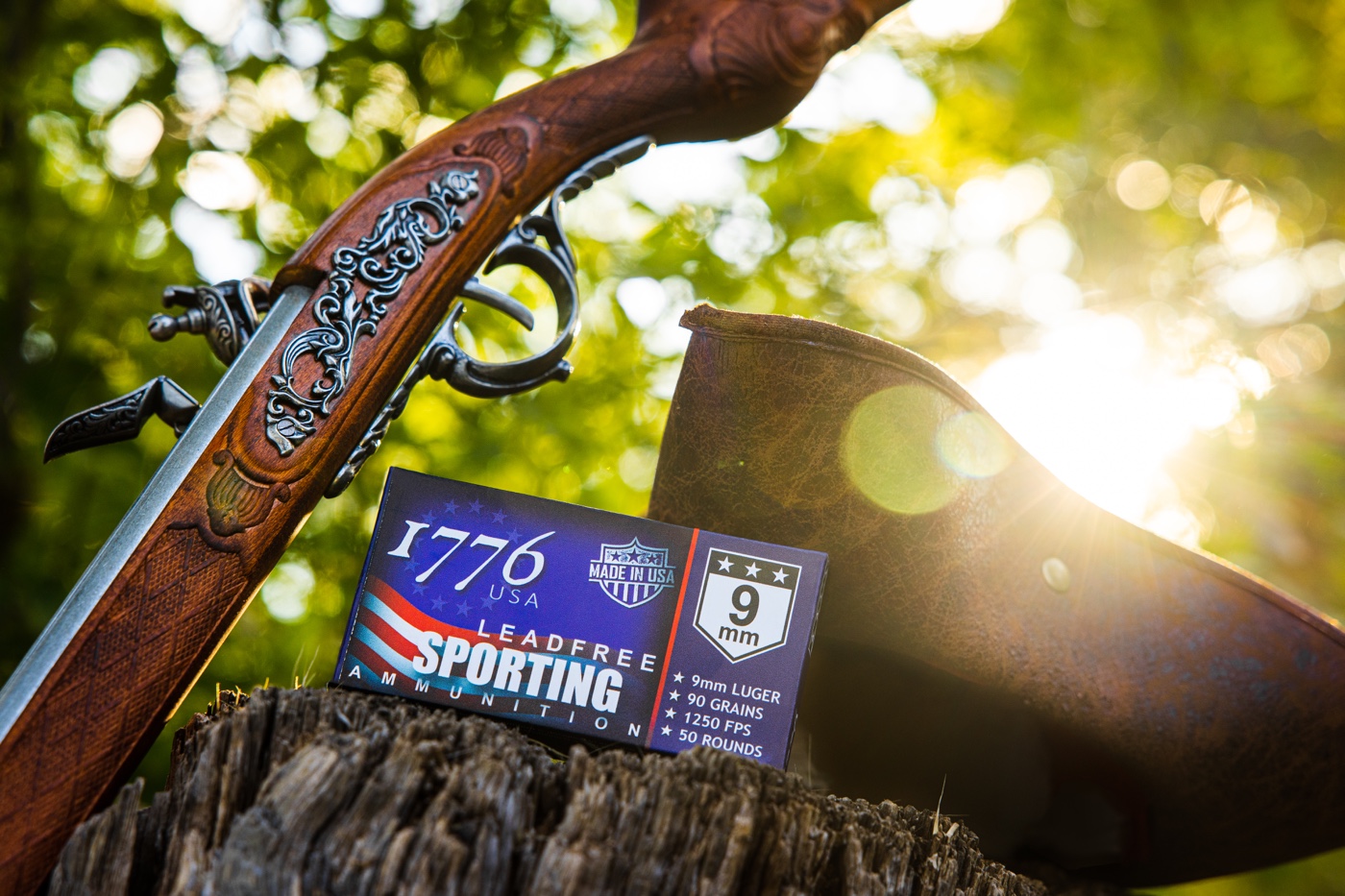
At the range, I ran the 1776 USA lead-free ammo through all of these Springfield favorites in succession, first working with pistols and then finishing with the SAINT Victor 9mm Carbine. While looking for any issues with feeding, cycling and overall consistency of placement on target, I put rounds down range on steel targets, Splattershot paper targets, reactive self-healing targets at varying distances and rates of fire.
Then I invited my buddy Jeremy to do a rudimentary comparative “sanity check” shootout test alongside me to get a gauge on how our respective accuracy stacked up between 1776 USA ammo versus when we shot with a leading competitor brand of traditional sporting ammo. The broad goal was to see how the ammo performed, felt, and compared to the experience of shooting traditional FMJ training ammo.
The Results?
First, and perhaps most importantly, throughout my testing and review, I encountered zero feeding or cycling issues on all of the firearms platforms utilized. The 1776 USA ammunition just ran, and it ran well. One subtle difference I did notice, however, was the impulse and recoil seemed to be lighter when shooting 1776 USA ammo, which makes sense as the 1776 USA ammo contains a 90-gr. projectile, versus conventional ball ammo, which averages around 115 grains.
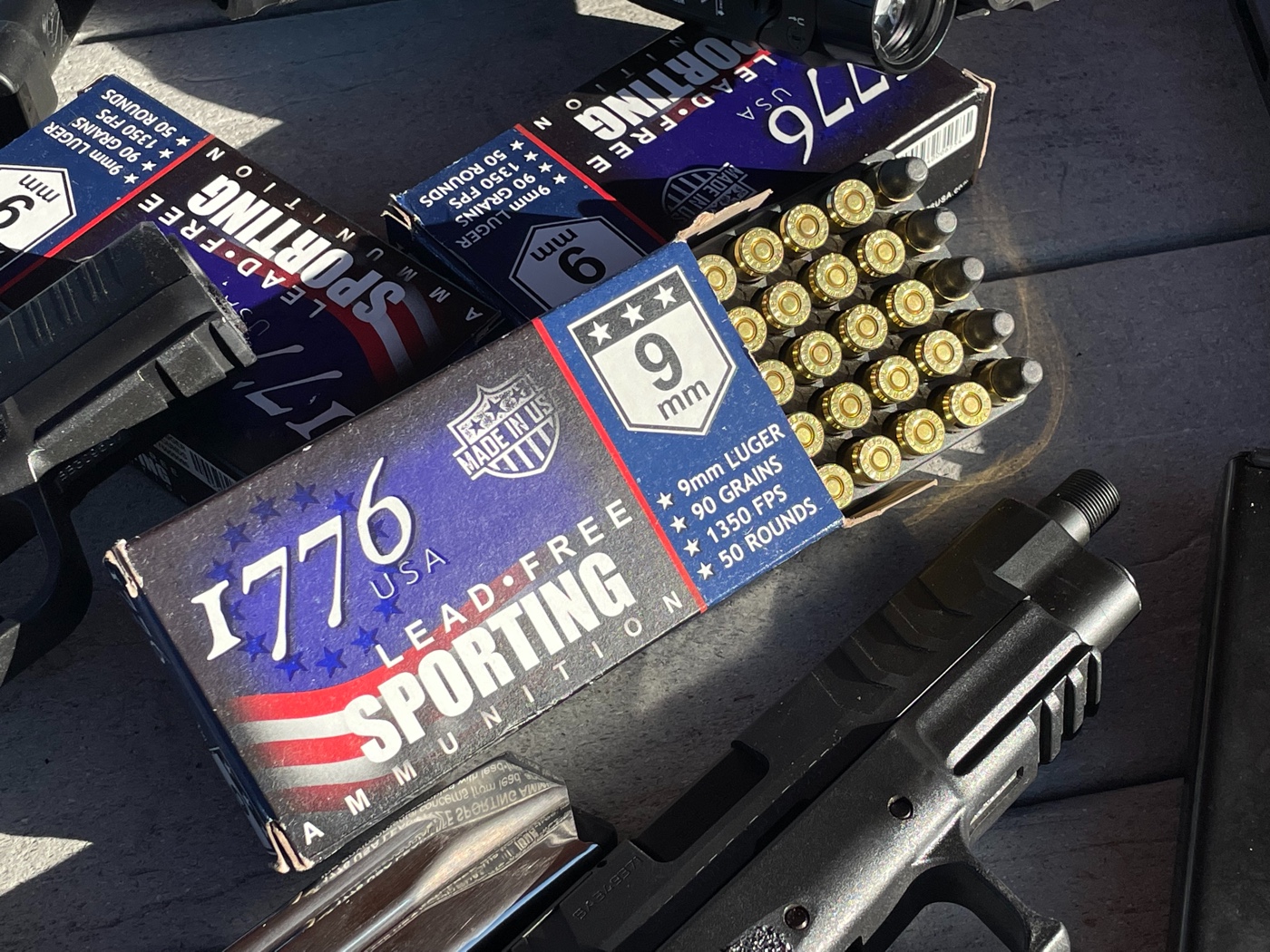
It wasn’t a negative aspect, however. On the contrary, it actually allowed me to maintain more positive control and engage follow-up shots a bit more rapidly during training. For inquiring minds who’d like to know, the velocity of the 1776 USA 9mm ammunition clocks in at 1,350 feet per second.
I also experimented by loading a few mags with alternating rounds of 1776 USA and the competitor FMJ ammo, to aid in feeling the difference and also gauge the consistency of shot placement and overall feel between each type of ammo.
The result? Out of hundreds of rounds, shot placement between 1776 USA and conventional ball ammunition was quite literally indiscernible. Shot placement at varying distances during training was tightly grouped, with ragged holes at close distance during the alternating ammo test.
Conclusion
My takeaway on 1776 USA’s 9mm lead-free ammunition after running it on multiple targets, through varying training exercises, accuracy tests and trips to the range is that it is exactly what it advertises itself to be: an all-American, cost-saving, lead-free, environmentally friendly alternative to conventional FMJ ball ammo.
Brass tacks? Does it work as well as FMJ ball ammo? Sure does. Would I recommend trying it? Absolutely. I’m eager to try all of their caliber offerings now that I have successfully run a large volume of their 9mm with success.
I recommend you hit your local big box sporting goods store if you’re interested in trying it out and do your own side-by-side comparison against your usual FMJ ball ammo. Let me know what you think if you give it a go in the forum comments section linked below.
Editor’s Note: Please be sure to check out The Armory Life Forum, where you can comment about our daily articles, as well as just talk guns and gear. Click the “Go To Forum Thread” link below to jump in!
Join the Discussion
Featured in this video
Continue Reading
Did you enjoy this video?

 53
53






